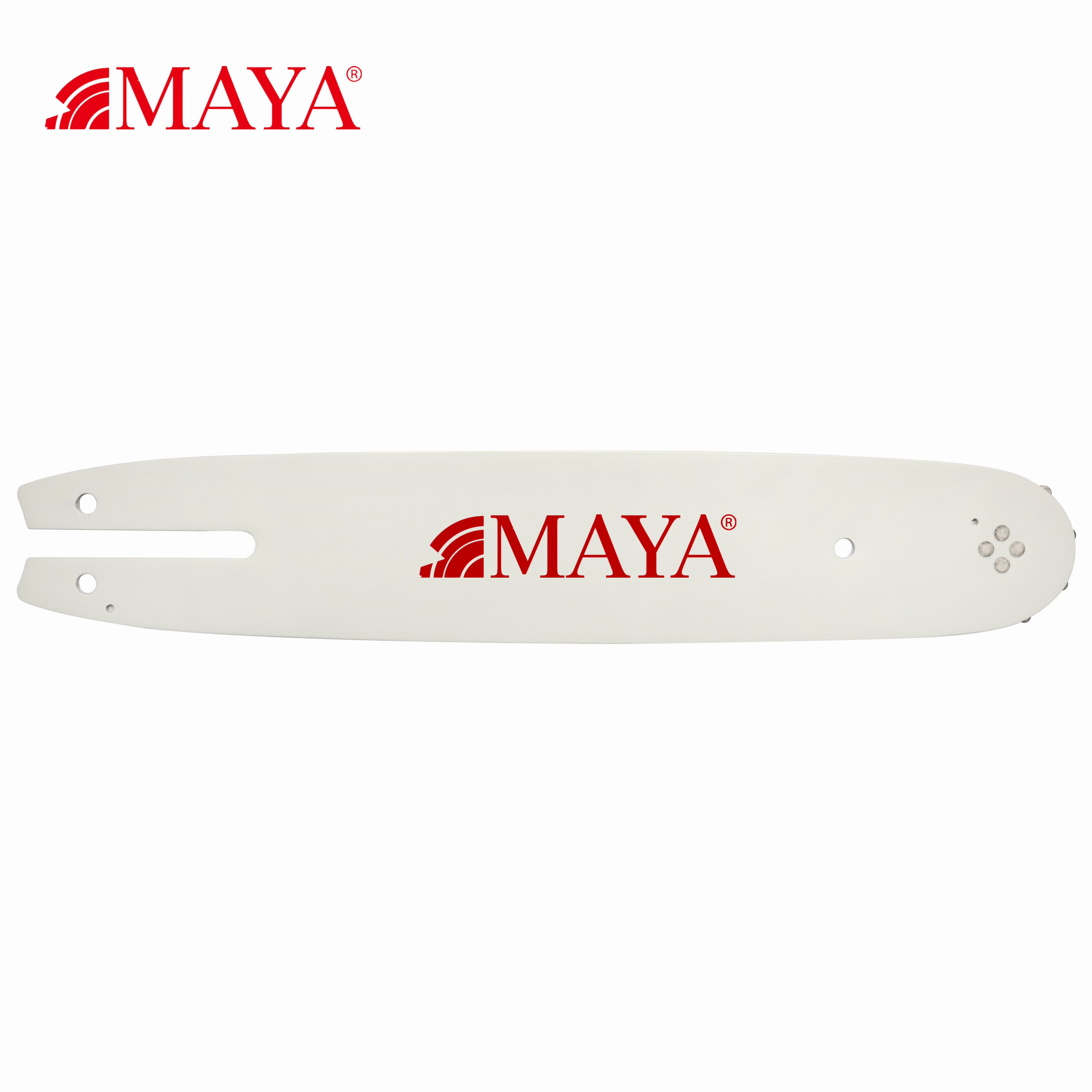Contact Us


News content

Chainsaws, ubiquitous in forestry, construction, and landscaping, rely on the synergy of various components to deliver efficient and safe cutting performance. Among these components, the guide bar stands out as a critical element, dictating the stability, precision, and endurance of the chainsaw. In this comprehensive analysis, we delve into two prominent guide bar types: the solid guide bar and the laminated guide bar. By exploring their construction, advantages, disadvantages, and diverse applications, we aim to furnish chainsaw users with a nuanced understanding to facilitate informed decision-making.
The solid guide bar, also dubbed the pro solid bar, embodies robustness and reliability through its monolithic construction from a single piece of high-grade steel. This construction imparts several notable advantages:
1. Durability: Renowned for their exceptional longevity, solid guide bars withstand the rigors of heavy-duty applications with poise. Their solid steel composition ensures resistance to deformation, even under sustained stress and adverse conditions.
2. Stability: Solid guide bars epitomize stability during operation, minimizing vibrations and flexing to enable precise, controlled cutting. This stability enhances operator confidence and facilitates seamless execution of cutting tasks.
3. Suited for Heavy-Duty Applications: Engineered to tackle formidable challenges, solid guide bars excel in heavy-duty applications such as felling large trees and cutting through dense hardwoods. Their robust construction instills confidence in users facing demanding cutting scenarios.
Despite their commendable attributes, solid guide bars exhibit certain limitations:
1. Weight: The solidity that endows solid guide bars with durability also imparts weight, potentially leading to increased operator fatigue during prolonged use, particularly in overhead cutting scenarios.
2. Cost: The superior materials and manufacturing processes involved in crafting solid guide bars render them relatively expensive compared to their laminated counterparts, posing a financial barrier to some users.
Contrasting with the monolithic solidity of their counterparts, laminated guide bars boast a layered construction, where multiple steel layers are bonded together. This construction confers several distinctive advantages:
1. Lightweight: Laminated guide bars, owing to their layered composition, exhibit significantly reduced weight compared to solid guide bars. This weight reduction enhances operator comfort, mitigates fatigue, and facilitates agile maneuvering, particularly in overhead cutting scenarios.
2. Affordability: Laminated guide bars emerge as a cost-effective option due to the reduced material costs associated with their layered construction. This affordability expands accessibility, enabling a broader user base to harness the benefits of quality guide bars.
3. Versatility: Versatility characterizes laminated guide bars, as they adeptly navigate a spectrum of cutting tasks, ranging from light pruning to medium-duty applications. Their balanced performance profile caters to diverse user needs, enhancing operational flexibility.
However, laminated guide bars harbor certain drawbacks:
1. Durability: While robust, laminated guide bars may exhibit diminished resilience compared to their solid counterparts, particularly under heavy loads or aggressive cutting conditions. Their layered construction renders them susceptible to bending or warping, necessitating cautious handling.
2. Vibration: The layered construction of laminated guide bars may engender marginally increased vibration during operation compared to solid guide bars. Although typically within acceptable limits, this vibration can impact cutting precision and operator comfort over prolonged use.
1. Construction: Solid guide bars comprise a single piece of solid steel, whereas laminated guide bars feature a layered construction with multiple steel layers bonded together.
2. Durability: Solid guide bars exhibit superior durability and stability, rendering them ideal for heavy-duty applications. Laminated guide bars offer commendable durability but may yield to heavy loads or aggressive cutting conditions more readily.
3. Weight: Laminated guide bars are notably lighter than solid guide bars, enhancing operator comfort and maneuverability, particularly in overhead cutting scenarios.
4. Cost: Solid guide bars command a premium due to their robust construction and materials, whereas laminated guide bars present a more budget-friendly option without compromising performance.
5. Versatility: Laminated guide bars boast versatility, catering to a broad spectrum of cutting tasks, while solid guide bars excel in heavy-duty applications demanding maximum durability and stability.
Conclusion
In navigating the choice between solid guide bars and laminated guide bars, chainsaw users must weigh various factors, including the intended application, user preferences, and budget constraints. For users confronting heavy-duty cutting challenges necessitating unwavering durability and stability, solid guide bars emerge as the discerning choice. Conversely, for general-purpose cutting tasks mandating maneuverability, affordability, and versatility, laminated guide bars offer a pragmatic solution. By comprehensively understanding the nuances of these guide bar types, chainsaw users can make informed decisions to optimize cutting performance, safety, and efficiency in diverse operational contexts.
More
Looking for the perfect tool for your gardening needs? Explore our selection of mini saw chains, designed for light duty work and home gardening tasks. With options powered by electricity, batteries, or gasoline, you'll find the ideal solution for your outdoor maintenance projects.
Discover comprehensive steps for inspecting and maintaining guide bars and saw chains to enhance chainsaw longevity and performance. Learn essential practices for wear detection, damage prevention, and replacement to ensure optimal cutting efficiency.
Learn how to select the right saw chain type for your cutting tasks with expert advice and guidance. Explore the anatomy of saw chains, understand different tooth types, and optimize cutting performance and safety.
More
Email: qirui@qiruibar.com
Tel:0086-571-82308666
Add: No. 390, Xiangdafang Industrial Park, Wenyan Street, Xiaoshan District,Hangzhou,Zhejiang,China
Website: www.qiruibar.com



Contact Us
Contact Us
